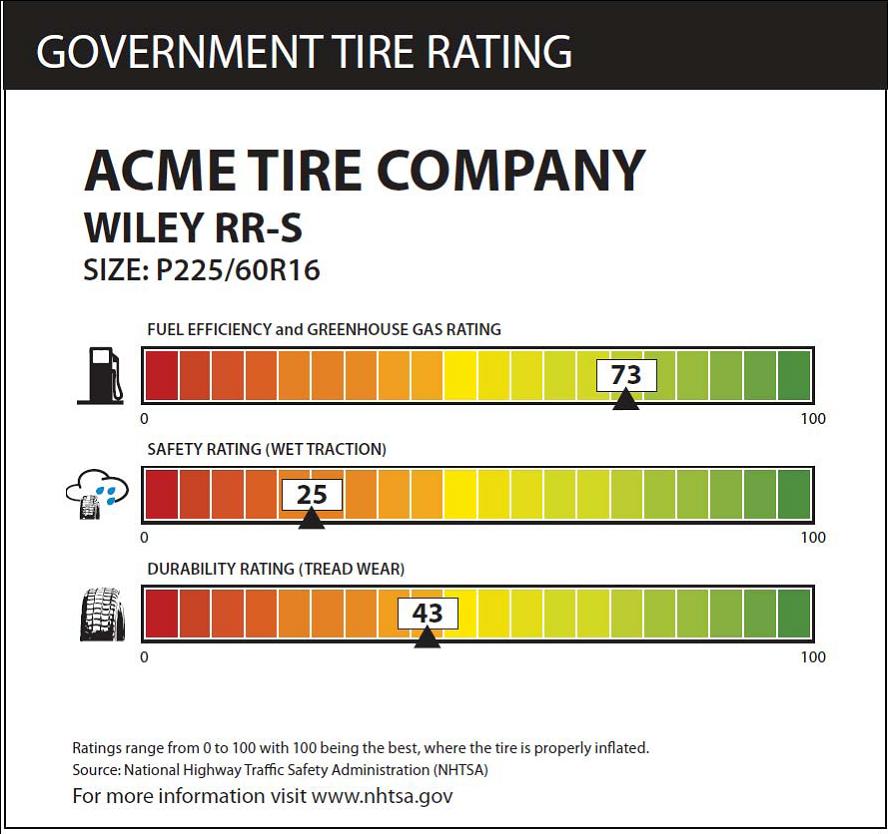The U.S. Department of Transportation has proposed a new, “consumer-friendly replacement tire label,” which would include for the first time information about the tire’s impact on fuel economy and CO2 emissions. Tires with lower rolling resistance (and proper inflation pressures) can contribute to better fuel economy.
This technical advantage has been consistently opposed by auto maker designers who continue to insist on larger, heavier tires with lower aspect ratios, which increase a tire’s rolling resistance.
“Today’s proposal takes the guess work out of buying the best tires for your vehicle,” said U.S. Transportation Secretary Ray LaHood. “Our proposal would let consumers look at a single label and compare a tire’s overall performance as it relates to fuel economy, safety and durability.”
NHTSA already offers tire safety information on the web.
NHTSA said that it is hoped that the proposed rule will have benefits in terms of fuel economy, safety, and durability. “At the very least, the proposed rule should enable consumers to make more informed decisions about these variables.”
In addition to the new fuel efficiency ratings, the proposal by the National Highway Traffic Safety Administration (NHTSA) also would provide consumers with two other vital tire performance indicators, wet weather traction and tread wear. All three ratings would be prominently displayed on a removable label attached to the replacement tire at the point of sale.
The new, three-tiered ratings also will appear on safercar.gov to help consumers in compare ratings as they shop for new tires. LaHood also noted that summer driving season is here, with people are loading up their cars, vans, and trucks for vacations. “So, while we’re talking tires, please remember that the best tires in the world will not keep drivers and passengers safe if they are under inflated or if vehicles are overloaded,” he said.
The Energy Independence and Security Act of 2007 included a requirement that NHTSA develop a national tire fuel efficiency consumer information program to educate consumers about the effect of tires on automobile fuel efficiency, safety, and durability.
In the proposed rule NHTSA said; “Consumers currently have little, if any, convenient way of determining how tire choices can affect vehicle fuel economy. The collective effects of the choices consumers make when they buy tires are matters of public interest. The 240 million passenger cars and light trucks in the United States consume about 135 billion gallons of motor fuel annually.”
NHTSA estimates — assuming that between 2% and 10% of targeted tires are improved and that the average reduction in rolling resistance among improved tires is between 5% and 10% — savings of 7.9 to 78 million gallons of fuel, and prevention of emissions of 76,000 to 757,000 metric tons of CO2 annually. The values of the fuel savings are between $22 and $220 million at a 3% discount rate and between $20 and $203 million at a 7% discount rate.

